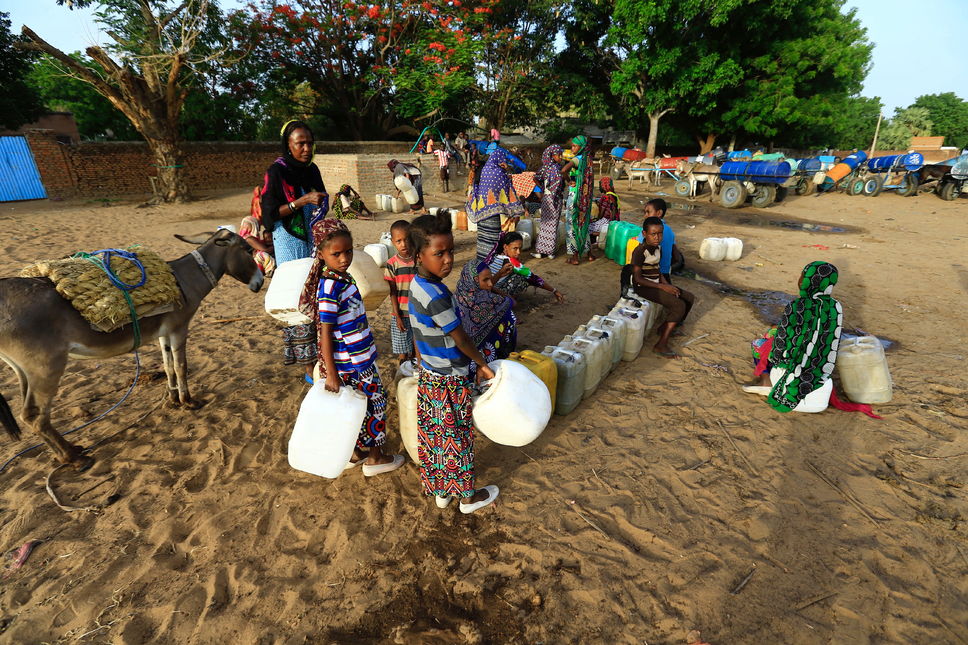20 million people threatened by famine
Conflicts that affect the population
"The first factor that explains the crisis is not drought, but war," says Maïka Sondarjee, a PhD student at the University of Toronto and a humanitarian aid specialist.
- Whether it is clashes between the army and rebel groups, as is the case in Yemen, or acts of terrorist groups, such as Boko- Haram in Nigeria, the areas most affected by conflict are Also those where people suffer the most from hunger.
- In addition to starving the population by killing livestock and looting markets, fighters prevent humanitarian organizations from helping them.
- "Entire areas are rendered inaccessible. In Nigeria, for example, only a few months ago we are reaching the northeast, where Boko-Haram is based, and still only by helicopter, "deplores Cecilia Millan, Coordinator of Humanitarian and Middle- Oxfam-Québec.
Little or no political power
- This humanitarian crisis is also a political crisis. The four countries concerned are struggling with governance crises.
"A weak state always brings empty plates," says Bruno Parmentier, French author and food specialist. The lack of state structure makes agriculture almost impossible. - "Even when resources are available, if there is not a strong state to protect them, everyone wants to seize them and armed conflicts erupt. This is the situation in Nigeria, an absurdly corrupt country. "
Dependent on aid
The problem of famine is also related to the economy.
"Many of these countries developed dependency on humanitarian aid and imports in the 1980s," says Maïka Sondarjee, a PhD student at the University of Toronto and a humanitarian aid specialist.
"In Somalia, opening up to foreign investors has hampered local development. Rather, it has benefited countries such as the United States, which subsidize their economy and can easily flood the markets with cheap grain. "
IDPs and epidemics
Millions of people fleeing hunger or war are gathering in camps such as Bentiu, in South Sudan, where 130,000 of these displaced are today.
"People live there under tarpaulins, in huts made of branches," recalls Renaud Philippe, one of the rare photojournalists to have been able to access it. There are a lot of single women and children in terrible sanitary conditions, feet in the mud. "
The concentration of populations and the problems of sanitation actually change the puddle of water into a formidable incubator of diseases.This is the case in Yemen, where a terrible epidemic of cholera is raging. In the month of May, the World Health Organization listed only 30,000 cases of the deadly and highly contagious disease that causes diarrhea and vomiting.
Terrible weather conditions"In Southern Sudan, drought is such that people are reduced to eating leaves," warns François Audet, director of the Canadian Observatory on Crises and Humanitarian Aid.
Indeed, if it is not solely responsible for this humanitarian crisis, the climate is part of the elements of explanation.
Africa is still suffering the effects of the last episode of El Nino, the climatic phenomenon whose last appearance in 2015 caused a strong increase in temperatures and a decrease in rainfall.In Somalia, harvests are catastrophic for the fourth consecutive year.
"We are talking about countries that, at the bottom, have only a low density of agricultural production and whose fragility is reinforced by this climate crisis, explains François Audet. Like famines, starvation creates displaced people by forcing people to take to the road in search of food. "
4 COUNTRIES IN EMERGENCY
Drought, armed conflict, epidemics and economic collapse strike the populations of Nigeria, South Sudan, Somalia and Yemen as never before. In these areas, millions of people are trying to escape from hunger and war. Here are the main causes of a crisis in many aspects.
Nigeria
- Conflict: In the state of Borno, in the north-east of the country, the Nigerian army is fighting the Islamist terrorist group Boko-Haram.
- Recent attack: On April 5, an attack by Boko-Haram killed 7 people in a breeding community in Abbati.
7 065 000 people in severe malnutrition, ie 4% of the population, in May 2017
South Sudan
- Conflict: Troops loyal to President Salva Kiir and rebels favoring former Vice-President Riek Machar are fighting for power.
- Recent attack: On 14 March, two people were killed in an unprotected attack on a humanitarian convoy in Yirol.
4,935,000 people in severe malnutrition, or 38 per cent of the population, from February to April 2017

